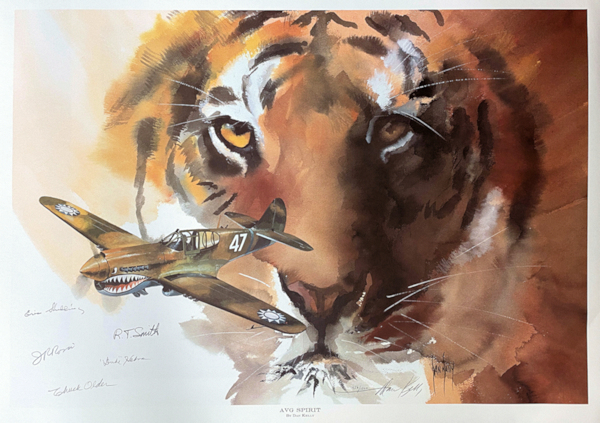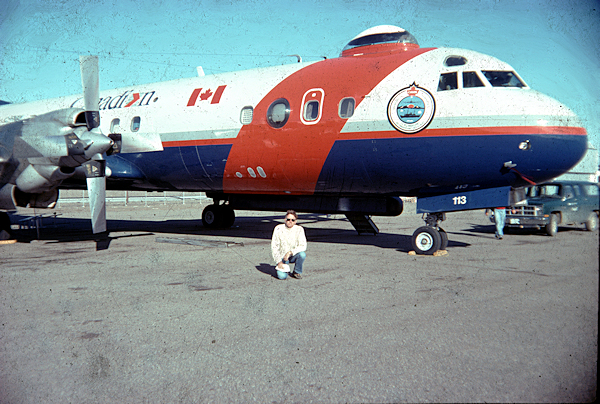|
A Note from your Chief Executive Officer MD-80 saved both American Airlines and McDonnell Douglas, by Charley Cleaver), thought-provoking (first hand views of how nuclear devices were tested over Christmas Island in the early 60s, by J. Rivard, for example) and have added to our store of knowledge about our shared aviation past. I eagerly look forward to the new Journal in my mailbox |
|
|
The story of the A-5 Vigilante is of a remarkable, high performance carrier-based aircraft, first fielded in the 1960s; and then evolved during the Vietnam War period into the most effective tactical reconnaissance system ever made available to American forces. Along the way, the Vigilante left some enduring legacies for national defense: |
|
|
Kingman, Arizona: A Century of Aviation History Charles Lindbergh touched down on the lone dirt runway of the 41-acre clearing known as Wallapai Field (alternatively known as Hualapai Field) in Kingman, Ariz., on June 1, 1928. As Chairman of the Technical Committee for the nascent Transcontinental Air Transport, Inc. (TAT), Lindbergh was surveying refueling terminals for a proposed air route. A seminal effort in coast-to-coast air travel, the TAT line would comprise 11 air terminals across the country between New York and Los Angeles, and traversed partly by air and partly by rail. The decade-old Wallapai Field - the earliest such field in northwest Arizona - was occasionally used as a refueling station, notably by U.S. Aerial Mail Service, and so was a logical waypoint in his search. |
|
|
Ice Patrol; Late in the Twentieth Century Chance – call it luck – is always a factor in love, in business and in war. Just ask any soldier, airman or naval officer. Sometimes, fortune proffers the unexpected. If one is wise, such moments ar.e savored for what they are: a delicious spice to the everyday of life-experience. |
|
|
The Stearman that Really wasn’t a Stearman; The XOSS-1 In 1937 the U.S. Navy (USN) issued a request for proposals to meet their specifications for a new Observation-Scout aircraft that would be capable of operating from either land or water and would be stressed for catapult launching from battleships and cruisers. This new aircraft was intended to replace the aging Curtiss SOC Seagull that had been ordered into production in 1933 and entered service in 1935. The Curtiss SOC currently was serving as the standard observation and gunnery spotting aircraft aboard the U.S. Navy’s capital ships.[1] |
|
|
The Aviation Heritage of Port Washington, Long Island Amphibious Aircraft Development |
|
|
Bellanca Aircraft before Bellanca Aircraft; An Italian youth |
|
|
The Forgotten Trainer; The Avro Anson AT-20 Do you remember the AT-20 Advanced Trainer? Have you seen one? Have you seen a photograph of one? Few people can answer yes to any of the above questions, even though the airplane in question was one of the world’s most popular trainers with a production run of over 11, 000. |
|
|
Interviews with Clarence Leonard "Kelly" Johnson "I was one of nine children, a very large family, and my earliest memories of upper Michigan were how beautiful it was to go out into the woods, up on the bluffs, watch the long iron-ore trains going on off both east and west, and I would always have some kind of camp where I could go on out summer or winter. In fact, in the winter at one time I went out into the woods when it was about 10 degrees above zero and I had my little camp out there. I never built a fire, but I would chase rabbits, try to read the tracks of the various animals that were in the place, and I always felt that I had a place to retreat to if I ever needed it, and there was a time when I did." |
|
|
PAA Boeing 314 Lives on; The Foynes Flying Boat & Maritime Museum in Ireland Recently the opportunity presented itself to step back in time to the "Golden Age" of aviation and board a full-size replica of the Pan American Airways System Boeing 314 flying boat Yankee Clipper NC18603. The replica is located in the Foynes Flying Boat & Maritime Museum, in County Limerick, Ireland. All aviation enthusiasts interested in flying boat history of the 1930s and 1940s must make this pilgrimage. The Museum is housed in the original airport terminal used during Pan American’s operations. |
|
|
There is a lot going on behind the scenes at your AAHS headquarters that does not get regular coverage. The
following provides a snapshot of activities during the last quarter. Don’t forget that there are opportunities for you to actively help further the objectives of the Society. Just contact Membership and volunteer. This issue of the AAHS Log Book focuses on the history behind the AAHS headquarters building at Flabob Airport and a quick look at AAHS’s participation at the 2022 EAA Air Venture in Oshkosh, Wisconsin. |
|
|
This issue of the Forum focuses on images from the air racing world. Covered are both actual racers and replicas of famous racing aircraft. |
|
|
News & Comments from our Members From AAHS Journal, Vol .67, No. 1, Spring 2022 |
|
|
First, a thank you to all the volunteers that helped staff the AAHS booth at EAA AirVenture. This was a first for us, and, all things considered, a successful one. We re established old contacts, created awareness about the organization, which we believe will help drive members, signed up some new members and connected with a number of current members. Most importantly, we learned a lot about what works, what doesn’t and how to do it much better next time. |
|
 American Aviation Historical Society
American Aviation Historical Society
1956 - 2023, Celebrating over 65+ Years of Service















